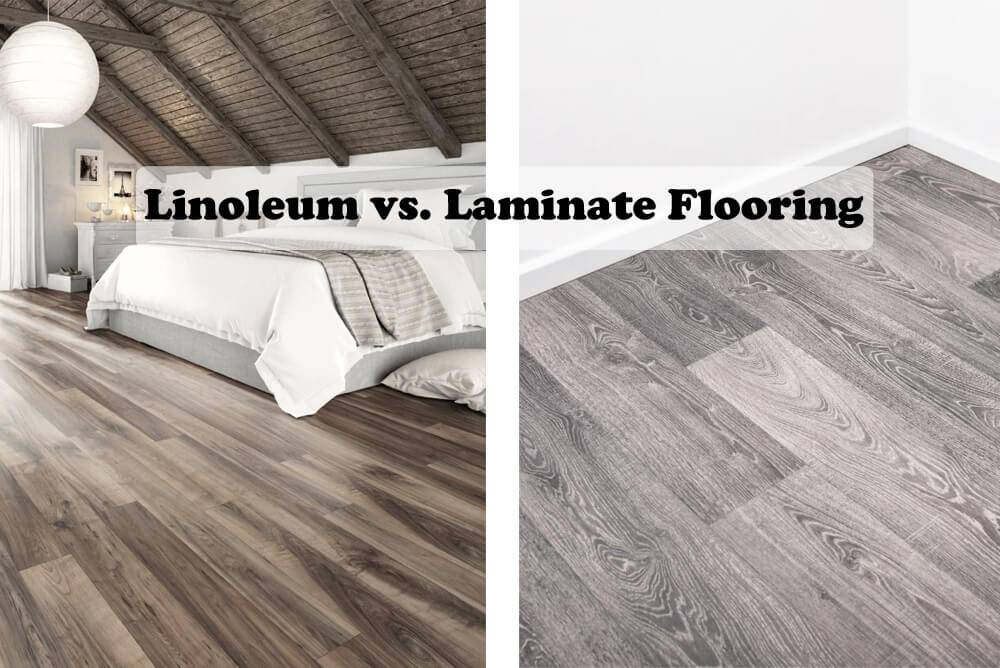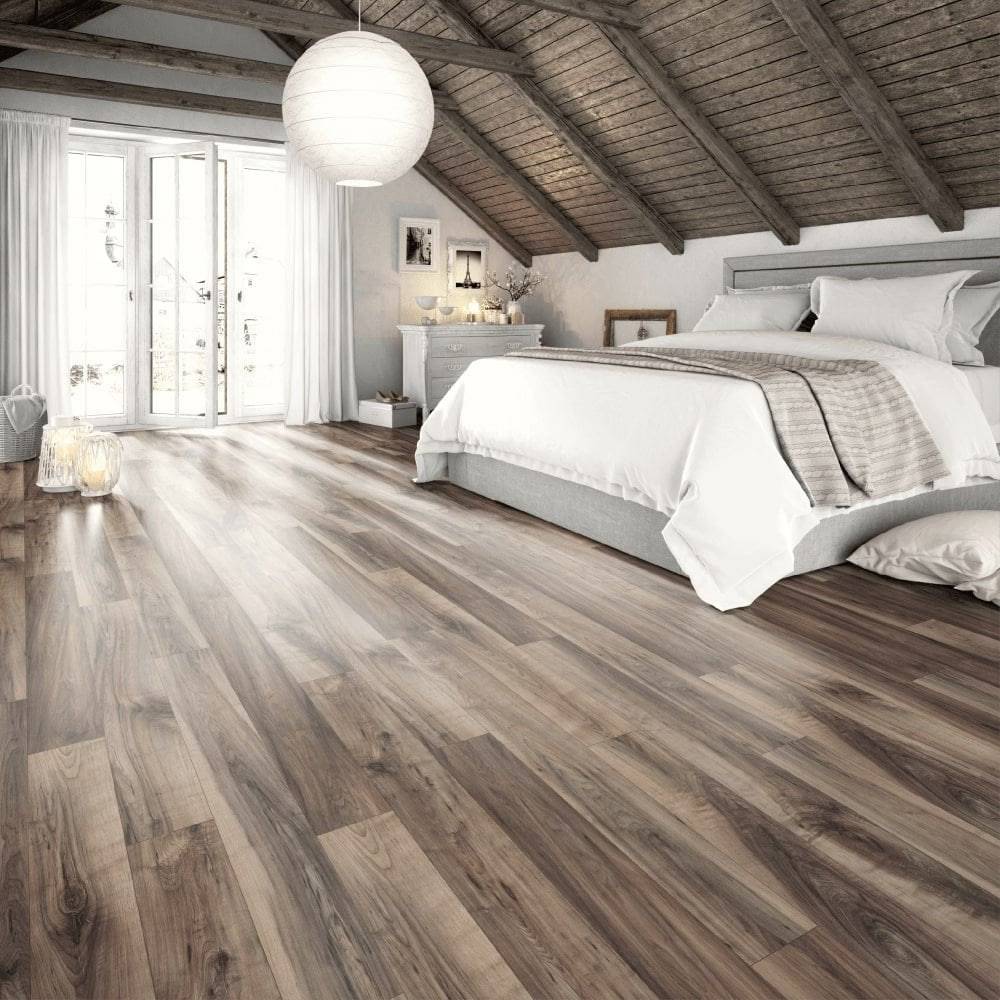Do you believe that laminate flooring will give you real wood? Think again! Linoleum and laminate may appear similar, but they are vastly different. Linoleum is made up of linseed oil and plant materials that are both natural and eco-friendly. Laminate, on the other hand, is a product that is made up of layers and imitates wood and other surfaces with a printed image. While both options are easy to maintain, laminate is the best option for DIY-friendly installation.
Dex Flooring has you covered! Whether you’re drawn to the natural beauty and eco-friendliness of linoleum or the budget-friendly style options of laminate, our vast selection and expert advice can help you find the perfect fit for your home.
Call Us Now : +61 483 224 831
Linoleum vs. Laminate Flooring: A Side-by-Side Comparison
| Feature | Linoleum | Laminate |
| Material | Natural materials (linseed oil, cork, wood flour) | Synthetic materials (HDF/MDF core, decorative paper, wear layer) |
| Style Options | Limited; mostly solid colors and some patterns | Wide variety; mimics wood, stone, tile, and other designs |
| Durability | Excellent; can last 40+ years with proper care | Good; high-quality laminate lasts 15-20 years, cheaper options wear faster |
| Water Resistance | Decent with sealed seams; not ideal for very wet areas | Poor; susceptible to water damage; avoid in bathrooms |
| Allergy-Friendly | Yes; naturally inhibits mold and mildew growth | Neutral |
| Ease of Installation | Difficult; requires professional installation for best results | Easy; DIY-friendly with click-lock system |
| Maintenance | Easy; regular cleaning with pH-neutral cleaner and occasional buffing | Easy; sweep, mop with recommended cleaner, and vacuum occasionally |
| Cost | More expensive upfront | Generally less expensive than linoleum |
| Eco-Friendly | Yes; made from natural, renewable materials | No; synthetic materials |
Linoleum Floor Composition
Linoleum flooring boasts a surprisingly earthy recipe. The star ingredient is linseed oil, which hardens to form a tough base. This is then bolstered with a sprinkle of cork for cushion, wood and jute for strength, and tree resins to bind everything together. The result? A resilient floor covering built to endure with proper care.
This ingenious invention has roots in the late 1800s. Frederick Walton, the mastermind behind linoleum, tirelessly experimented with linseed oil and additives until he struck gold with a durable product. Its success was instant, prompting Walton to open a chain of linoleum shops across London and even export to the United States. Inspired by his creation, others began crafting their own variations, pushing the boundaries of durability and affordability.
Linoleum: Pros and Cons
Pros:
- Durable Champion: Linoleum floors are built to last! With proper care, they can grace your home for decades.
- Water Resistant Winner: Say goodbye to worries about spills! Properly sealed seams make linoleum a great choice for kitchens, bathrooms, or any water-prone areas.
- Allergy Avenger: Allergy sufferers, breathe easy! Linoleum is naturally hypoallergenic and resists mold and mildew, keeping your air fresh.
- Cleaning Champion: Maintenance is a breeze. The hard surface makes regular cleaning with sweeping, mopping, and dusting a breeze.
Cons:
- DIY Dilemma: While tempting for the handy homeowner, installing linoleum sheets can be tricky. Cutting requires sharp tools and precision, and applying adhesive evenly takes practice. Professional installation might be a better bet.
- Subfloor Scrutiny: Linoleum demands a perfectly smooth subfloor. Even tiny imperfections can “telegraph” through, creating bumps on your beautiful floor.
Laminate Flooring Composition
Laminate flooring packs a punch with its four key layers, each playing a crucial role:
- The Foundation: The bottom layer acts as a shield, protecting the core from moisture and ensuring the board stays flat. Some laminates even have a built-in foam base, eliminating the need for separate underlayment.
- The Core: High-density fiberboard (HDF) is the powerhouse at the heart of the laminate. This dense layer provides the bulk and structural strength for the entire floor.
- The Decorative Masterpiece: Next comes the magic! A decorative paper layer sits on top, showcasing a realistic image of wood, stone, or any other design imaginable.
- The Guardian Shield: The final layer is a transparent, protective shield, often made of aluminum oxide. This tough barrier defends against scratches, scuffs, spills, and even fading from ultraviolet rays.
Not to be Confused with Vinyl Flooring: It’s important to distinguish laminate from luxury vinyl flooring. While both offer a printed design layer, vinyl flooring reigns supreme in moisture resistance. This makes vinyl a better choice for high-humidity areas like bathrooms.
Laminate Flooring: Pros and Cons
Laminate flooring offers a compelling combination of style and practicality:
Pros:
- Easy on the Eyes, Easy on the Wallet: Laminate boasts a vast array of colors and designs, far surpassing linoleum’s selection. For a fraction of the cost of real hardwood, you can enjoy realistic wood-look patterns or even explore creative designs like stone or tile.
- DIY Delight: Laminate installation is a breeze compared to most flooring options. Forget messy glue or complicated fasteners – laminate planks simply click together, making it a perfect project for first-time DIYers.
- Simple Maintenance: Keeping your laminate floor looking spick and span is effortless. Regular sweeping, mopping, and dusting are all you need to maintain its beauty.
Cons:
- Durability Dilemma: While laminate is generally tough, you get what you pay for. Thinner, inexpensive options might show wear and tear faster, potentially lasting as little as 10 years in high-traffic areas. Consider investing in a thicker, higher quality laminate for long-lasting performance.
- Not So Authentic Underfoot: Laminate may look like wood, but it can’t replicate the feel of real hardwood. The surface can feel somewhat hollow or plasticky compared to genuine wood flooring.
Remember: Laminate isn’t invincible. Spills should be cleaned up promptly to prevent moisture damage, and the floor isn’t ideal for damp environments like bathrooms.
Installation Comparison: Linoleum vs. Laminate
When it comes to installation, linoleum and laminate flooring take vastly different approaches:
Linoleum:
- Skill Level: Generally for professionals. Cutting large sheets and applying adhesive evenly requires experience and specialized tools.
- Process: Linoleum sheets are adhered directly to the subfloor using a specific adhesive. The subfloor needs to be perfectly smooth and level for a flawless installation.
- DIY Friendliness: Low. Unless you’re a seasoned DIYer comfortable with precise cutting and adhesive work, consider hiring a professional for a smooth (literally) installation process.
Laminate:
- Skill Level: DIY friendly! Perfect for first-time installers.
- Process: Laminate planks feature a click-lock system that allows them to be snapped together easily. No glue or fasteners are required, creating a “floating floor” that sits on top of an underlayment pad.
- DIY Friendliness: High. Laminate’s click-lock system makes installation a breeze. Just follow the manufacturer’s instructions and enjoy the satisfaction of completing your own flooring project.
In a Nutshell:
For a quick and easy DIY project, laminate is the clear winner. However, if you prioritize a professional touch and a perfectly smooth finish, linoleum might be worth considering, albeit with professional installation factored into the cost.
Care and Longevity Comparisons: Linoleum vs. Laminate
Keeping your floors beautiful for years to come requires proper care. Here’s how linoleum and laminate stack up:
Linoleum:
- Upkeep: Relatively easy to maintain. Regular sweeping, mopping with a pH-neutral cleaner, and occasional buffing keep it looking fresh.
- Longevity: Champion of endurance! With proper care, linoleum floors can grace your home for 40 years or more.
- Water Resistance: Decent, but not invincible. Properly sealed seams are crucial to prevent water damage. Spills should be cleaned up promptly.
Laminate:
- Upkeep: A breeze! Regular sweeping, mopping with a recommended cleaner, and occasional vacuuming are all you need.
- Longevity: Respectable, but quality matters. High-quality laminate can last 15-20 years with proper care. However, cheaper options might show wear in as little as 10 years.
- Water Resistance: Not the best. Laminate is susceptible to water damage, so clean up spills immediately. Avoid using laminate in high-moisture areas like bathrooms.
In a Nutshell:
Both linoleum and laminate offer easy maintenance routines. However, linoleum reigns supreme in longevity, potentially lasting decades with proper care. Laminate’s lifespan depends on quality, but it might require replacement sooner than linoleum. Linoleum’s water resistance is decent with proper sealing, while laminate is more vulnerable and best suited for dry areas.
Linoleum and Laminate Flooring Trend FAQs
Are patterned linoleum floors making a comeback?
Yes! While solid colors have been linoleum’s mainstay, there’s a resurgence of interest in geometric and vintage-inspired patterns. These can add a touch of personality and character to your space.
What’s hot in laminate right now?
Light and airy wood looks are trending in laminate flooring. This creates a sense of openness and complements minimalist design styles. However, don’t discount bolder options! Large, statement floor tiles that mimic stone or weathered wood are also gaining popularity.
Is sustainable flooring a major consideration for homeowners?
Absolutely! Linoleum’s natural materials and long lifespan make it an eco-friendly choice. Additionally, some laminate manufacturers are using recycled content and offering eco-conscious certifications on their products.
Are there any new installation trends for these floorings?
Herringbone and chevron patterns are popular choices for both laminate and linoleum. These installation styles add a touch of elegance and visual interest to any room.
Should I be concerned about the “fake” look of laminate?
Manufacturing techniques have come a long way! High-quality laminate can achieve incredibly realistic wood or stone looks. However, laminate flooring can’t replicate the texture of natural materials. Consider your priorities – if achieving a genuine wood feel is essential, linoleum or even real hardwood might be a better fit.



